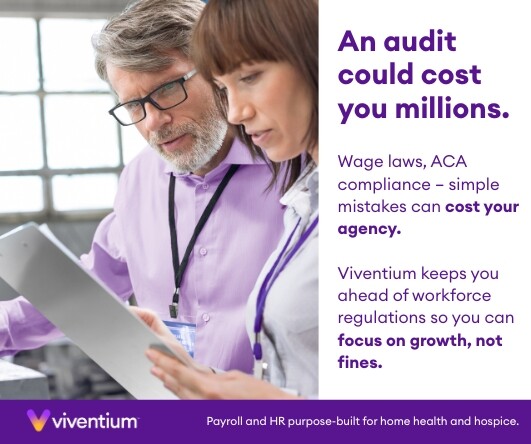New Training, New HH Compare
New Training, New HH Compare
Home Health Quality Reporting Training
September 01, 2020
Introduction to the Home Health Quality Reporting Program Web-Based Training
The Centers for Medicare & Medicaid Services is offering a web-based training course for those who are new to the Home Health Quality Reporting Program. This course is designed to provide a general overview of the program as well as a variety of links and resources for additional information. Specific topics include:
Lesson 1: What is the Home Health Quality Reporting Program (HH QRP)?
Lesson 2: The Outcome and Assessment Information Set (OASIS)
Lesson 3: OASIS Data Submission
Lesson 4: HH QRP Resources
CLICK HERE to access the training
Submit technical questions or feedback to: PAC Training mailbox.
Submit content-related questions to: HH Quality Reporting Program Help Desk
Home Health Compare merged with all other “Compare” databases
On September 3, CMS launched Care Compare, a streamlined redesign of eight existing CMS healthcare compare tools available on Medicare.gov. Care Compare provides a single user-friendly interface that patients and caregivers can use to make informed decisions about healthcare based on cost, quality of care, volume of services, and other data. With just one click, patients can find information that is easy to understand about doctors, hospitals, nursing homes, and other health care services instead of searching through multiple tools.
For more than 20 years, Medicare’s online compare tools have served as the cornerstone for publicizing quality care information for patients, caregivers, consumers, and the healthcare community. Today’s announcement builds on the eMedicare initiative that first launched by the Trump Administration in 2018 to deliver simple tools and information to current and future Medicare beneficiaries.
Drawing on lessons learned through research and stakeholder feedback, Care Compare includes features and functionalities that appeal to consumers. By offering a user-friendly interface and a simple design that is optimized for mobile and tablet use, it is easier than ever to find information that is important to patients when shopping for healthcare. Enhancements for mobile use will give practical benefits like accessing the tool using a smartphone can initiate phone calls to providers simply by clicking on the provider’s phone number.
Currently, someone who is planning to have bypass surgery would need to visit Hospital Compare, Nursing Home Compare, and Home Health Compare individually to research providers for the different phases of their surgery and rehabilitation. Now, those patients can start their search at Care Compare to find and compare providers that meet their healthcare needs that includes information about quality measures presented similarly and clearly across all provider types and care settings.
Patients will also find helpful hints and guides throughout Care Compare. For example, when searching for a nursing home, patients have the ability to utilize a checklist with common questions and considerations when selecting a nursing home. While the measures and data used for Care Compare have not changed, the way information is displayed is now different. During a transition period, consumers and other stakeholders will be able to use the original eight compare tools while CMS continues to gather feedback and considers additional improvements to the tool. As new information about quality and cost are added to the compare tools, Care Compare will be updated to reflect that information.
©2020 by Rowan Consulting Associates, Inc., Colorado Springs, CO. This article originally appeared in Home Care Technology: The Rowan Report. Click here to subscribe. It may be freely reproduced provided this copyright statement remains intact. editor@homecaretechreport.com



